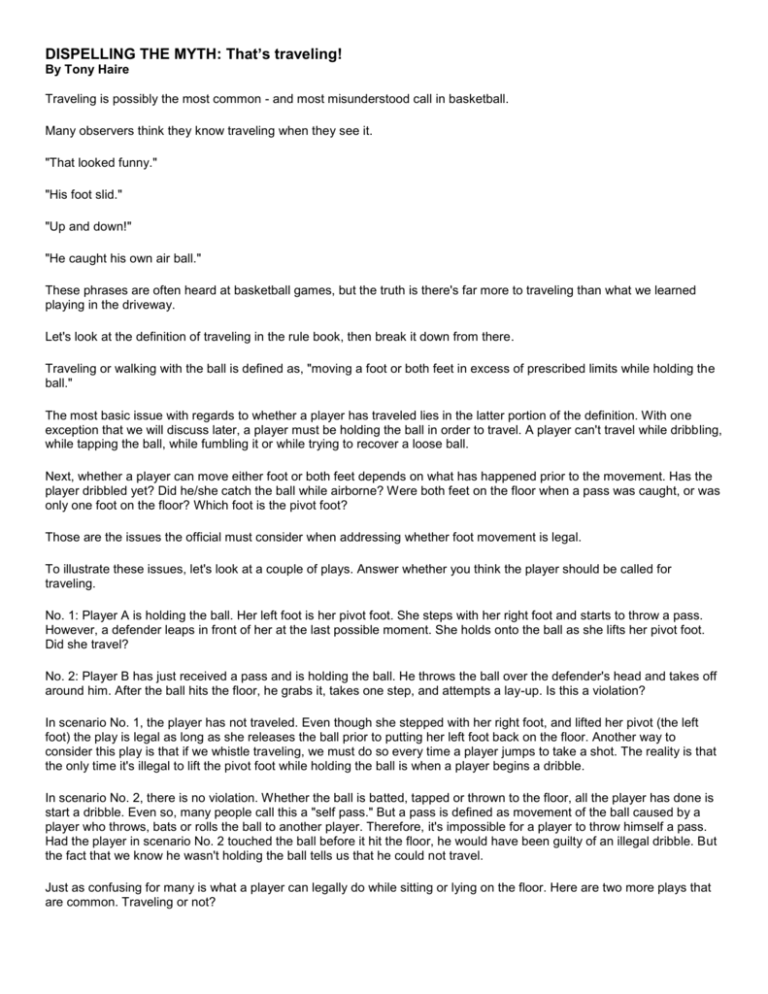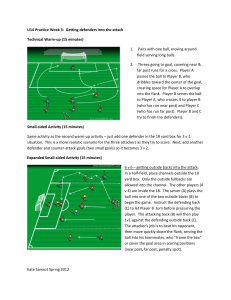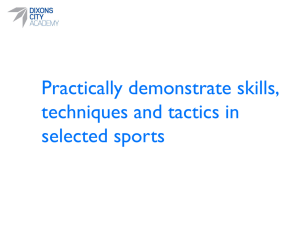That's traveling
advertisement

DISPELLING THE MYTH: That’s traveling! By Tony Haire Traveling is possibly the most common - and most misunderstood call in basketball. Many observers think they know traveling when they see it. "That looked funny." "His foot slid." "Up and down!" "He caught his own air ball." These phrases are often heard at basketball games, but the truth is there's far more to traveling than what we learned playing in the driveway. Let's look at the definition of traveling in the rule book, then break it down from there. Traveling or walking with the ball is defined as, "moving a foot or both feet in excess of prescribed limits while holding the ball." The most basic issue with regards to whether a player has traveled lies in the latter portion of the definition. With one exception that we will discuss later, a player must be holding the ball in order to travel. A player can't travel while dribbling, while tapping the ball, while fumbling it or while trying to recover a loose ball. Next, whether a player can move either foot or both feet depends on what has happened prior to the movement. Has the player dribbled yet? Did he/she catch the ball while airborne? Were both feet on the floor when a pass was caught, or was only one foot on the floor? Which foot is the pivot foot? Those are the issues the official must consider when addressing whether foot movement is legal. To illustrate these issues, let's look at a couple of plays. Answer whether you think the player should be called for traveling. No. 1: Player A is holding the ball. Her left foot is her pivot foot. She steps with her right foot and starts to throw a pass. However, a defender leaps in front of her at the last possible moment. She holds onto the ball as she lifts her pivot foot. Did she travel? No. 2: Player B has just received a pass and is holding the ball. He throws the ball over the defender's head and takes off around him. After the ball hits the floor, he grabs it, takes one step, and attempts a lay-up. Is this a violation? In scenario No. 1, the player has not traveled. Even though she stepped with her right foot, and lifted her pivot (the left foot) the play is legal as long as she releases the ball prior to putting her left foot back on the floor. Another way to consider this play is that if we whistle traveling, we must do so every time a player jumps to take a shot. The reality is that the only time it's illegal to lift the pivot foot while holding the ball is when a player begins a dribble. In scenario No. 2, there is no violation. Whether the ball is batted, tapped or thrown to the floor, all the player has done is start a dribble. Even so, many people call this a "self pass." But a pass is defined as movement of the ball caused by a player who throws, bats or rolls the ball to another player. Therefore, it's impossible for a player to throw himself a pass. Had the player in scenario No. 2 touched the ball before it hit the floor, he would have been guilty of an illegal dribble. But the fact that we know he wasn't holding the ball tells us that he could not travel. Just as confusing for many is what a player can legally do while sitting or lying on the floor. Here are two more plays that are common. Traveling or not? No. 3: Player A dives for a loose ball on the floor. She gains control of the ball but continues to slide before coming to a stop and requesting a timeout. Is sliding on the floor in such a manner a violation? No. 4: Player A1 falls to the floor and is lying on his back when he recovers a loose ball. He sits up and passes the ball to another player. Is that legal? In scenario No. 3, it's perfectly legal and expected that a player who dives for the ball will continue to slide. In such a situation, there is no pivot foot. Once the player stops sliding, she cannot roll over or attempt to get up. In scenario No. 4, once again the player has not violated the traveling rule. As above, the player has not rolled over or attempted to get up. He can sit up if lying on his back, pass or even shoot the ball. He can even begin a dribble and stand. However, this brings us to the exception that I mentioned earlier. As I said, it's traveling to attempt to rise while holding the ball. With that in mind, can a player place the ball on the floor, stand and retrieve the ball? No, not within the framework of the rule. This is an attempt to circumvent the rule and is the only time a traveling violation can occur when the player is not holding the ball. And finally, everyone's favorite traveling call. No. 5: Player A drives to the basket, throws up an air ball, and catches it on the opposite side of the basket. Has he traveled? In the NBA, and possibly in your driveway, Player A has traveled. But under high school and college rules, the player has not traveled. When a player shoots the ball, player control has ended. It's now a shot that any player can rebound. Hopefully, that helps settle some of the traveling myths you made have become familiar with over the years. Just remember that the key to these plays is that traveling involves movement while holding the ball.






